A Low-Profile Ultrawideband Antenna Based on Flexible Graphite Films for On-Body Wearable Applications
Abstract
:1. Introduction
2. Materials and Antenna Design
2.1. Characterization of Materials
2.2. Antenna Design
3. Measurement and Results
4. Conclusions
Author Contributions
Funding
Institutional Review Board Statement
Informed Consent Statement
Data Availability Statement
Acknowledgments
Conflicts of Interest
References
- Alqadami, A.S.M.; Bialkowski, K.S.; Mobashsher, A.T.; Abbosh, A.M. Wearable Electromagnetic Head Imaging System Using Flexible Wideband Antenna Array Based on Polymer Technology for Brain Stroke Diagnosis. IEEE Trans. Biomed. Circuits Syst. 2019, 13, 124–134. [Google Scholar] [CrossRef]
- Chen, Y.S.; Ku, T.Y. A Low-Profile Wearable Antenna Using a Miniature High Impedance Surface for Smartwatch Applications. IEEE Antennas Wirel. Propag. Lett. 2016, 15, 1144–1147. [Google Scholar] [CrossRef]
- Alqadami, A.S.M.; Nguyen-Trong, N.; Mohammed, B.; Stancombe, A.E.; Heitzmann, M.T.; Abbosh, A.M. Compact unidirectional conformal antenna based on flexible high-permittivity custom-made substrate for wearable wideband EM head imaging system. IEEE Trans. Antennas Propag. 2020, 68, 183–194. [Google Scholar] [CrossRef]
- Lee, H.; Tak, J.; Choi, J. Wearable Antenna Integrated into Military Berets for Indoor/Outdoor Positioning System. IEEE Antennas Wirel. Propag. Lett. 2017, 16, 1919–1922. [Google Scholar] [CrossRef]
- Singh, M.; Jain, N. Performance and Evaluation of Smartphone Based Wireless Blood Pressure Monitoring System Using Bluetooth. IEEE Sens. J. 2016, 16, 8322–8328. [Google Scholar] [CrossRef]
- Zhao, B.; Mao, J.N.; Zhao, J.; Yang, H.Z.; Lian, Y. The role and challenges of body channel communication in wearable flexible electronics. IEEE Trans. Biomed. Circuits Syst. 2020, 14, 283–296. [Google Scholar] [CrossRef]
- Honari, M.M.; Ghaffarian, M.S.; Mirzavand, R. Miniaturized Antipodal Vivaldi Antenna with Improved Bandwidth Using Exponential Strip Arms. Electronics 2021, 10, 83. [Google Scholar] [CrossRef]
- Eichenberger, J.; Yetisir, E.; Ghalichechian, N. High-Gain Antipodal Vivaldi Antenna with Pseudoelement and Notched Tapered Slot Operating at (2.5 to 57) GHz. IEEE Trans. Antennas Propag. 2019, 67, 4357–4366. [Google Scholar] [CrossRef]
- Simorangkir, R.B.V.B.; Kiourti, A.; Esselle, K.P. UWB Wearable Antenna with a Full Ground Plane Based on PDMS-Embedded Conductive Fabric. IEEE Antennas Wirel. Propag. Lett. 2018, 17, 493–496. [Google Scholar]
- Yuk, T.I.; Sun, Y.; Cheung, S.W. Design of a textile ultra-wideband antenna with stable performance for body-centric wireless communications. Microw. Antennas Propag. 2014, 8, 1363–1375. [Google Scholar]
- Lin, X.; Chen, Y.; Gong, Z.; Seet, B.; Huang, L.; Lu, Y. Ultrawideband Textile Antenna for Wearable Microwave Medical Imaging Applications. IEEE Trans. Antennas Propag. 2020, 68, 4238–4249. [Google Scholar] [CrossRef]
- Li, R.; Guo, Y. A Conformal UWB Dual-Polarized Antenna for Wireless Capsule Endoscope Systems. IEEE Antennas Wirel. Propag. Lett. 2021, 20, 483–487. [Google Scholar]
- Yan, S.; Vandenbosch, G.A.E. Design of wideband button antenna based on characteristic mode theory. IEEE Trans. Biomed. Circuits Syst. 2018, 12, 1383–1391. [Google Scholar] [CrossRef]
- Kim, J.; Campbell, A.S.; de Avila, B.E.F.; Wang, J. Wearable biosensors for healthcare monitoring. Nat. Biotechnol. 2019, 37, 389–406. [Google Scholar] [CrossRef] [PubMed]
- Zhang, K.; Vandenbosch, G.A.E.; Yan, S. A Novel Design Approach for Compact Wearable Antennas Based on Metasurfaces. IEEE Trans. Biomed. Circuits Syst. 2020, 14, 918–927. [Google Scholar] [CrossRef]
- Song, L.; Rahmat-Samii, Y. A Systematic Investigation of Rectangular Patch Antenna Bending Effects for Wearable Applications. IEEE Trans. Antennas Propag. 2018, 66, 2219–2228. [Google Scholar] [CrossRef]
- Yin, X.Y.; Chen, S.J.; Fumeaux, C. Wearable Dual-Band Dual-Polarization Button Antenna for WBAN Applications. IEEE Antennas Wirel. Propag. Lett. 2020, 19, 2240–2244. [Google Scholar] [CrossRef]
- Zhang, K.; Soh, P.J.; Yan, S. Meta-Wearable Antennas—A Review of Metamaterial Based Antennas in Wireless Body Area Networks. Materials 2020, 14, 149. [Google Scholar] [CrossRef]
- Wang, M.J.; Yang, Z.; Wu, J.F.; Bao, J.H.; Liu, J.Y.; Cai, L.L.; Dang, T.; Zheng, H.X.; Li, E. Investigation of SAR Reduction Using Flexible Antenna With Metamaterial Structure in Wireless Body Area Network. IEEE Trans. Antennas Propag. 2018, 66, 3076–3086. [Google Scholar] [CrossRef]
- FCC. Available online: https://www.fcc.gov/document/guidelines-evaluating-environmental-effects-radiofrequency (accessed on 24 December 1996).
- IEEE Standard for Safety Levels with Respect to Human Exposure to Radio Frequency Electromagnetic Fields, 3 kHz to 300 GHz; IEEE Std C95.1-1991; IEEE: Piscataway, NJ, USA, 1992; pp. 1–76. [CrossRef]
- Hu, B.; Gao, G.P.; He, L.L.; Cong, X.D.; Zhao, J.N. Bending and On-Arm Effects on a Wearable Antenna for 2.45GHz Body Area Network. IEEE Antennas Wirel. Propag. Lett. 2016, 15, 378–381. [Google Scholar] [CrossRef]
- Hu, X.M.; Yan, S.; Vandenbosch, G.A.E. Wearable Button Antenna for Dual-Band WLAN Applications with Combined on and off-Body Radiation Patterns. IEEE Trans. Antennas Propag. 2017, 65, 1384–1387. [Google Scholar]
- Sambandam, P.; Kanagasabai, M.; Natarajan, R.; Alsath, M.G.N.; Palaniswamy, S. Miniaturized Button-Like WBAN Antenna for Off-Body Communication. IEEE Trans. Antennas Propag. 2020, 68, 5228–5235. [Google Scholar] [CrossRef]
- Hu, X.M.; Yan, S.; Vandenbosch, G.A.E. Compact Circularly Polarized Wearable Button Antenna with Broadside Pattern for U-NII Worldwide Band Applications. IEEE Trans. Antennas Propag. 2019, 67, 1341–1345. [Google Scholar] [CrossRef]
- Kwak, K.S.; Ullah, S.; Ullah, N. An overview of IEEE 802.15. 6 standard. In Proceedings of the 3rd International Symposium on Applied Sciences in Biomedical and Communication Technologies, Rome, Italy, 7–10 November 2010; pp. 1–6. [Google Scholar]
- Genovesi, S.; Costa, F.; Fanciulli, F.; Monorchio, A. Wearable Inkjet-Printed Wideband Antenna by Using Miniaturized AMC for Sub-GHz Applications. IEEE Antennas Wirel. Propag. Lett. 2016, 15, 1927–1930. [Google Scholar] [CrossRef]
- Smida, A.; Iqbal, A.; Alazemi, A.J.; Waly, M.I.; Ghayoula, R.; Kim, S. Wideband Wearable Antenna for Biomedical Telemetry Applications. IEEE Access 2020, 8, 15687–15694. [Google Scholar] [CrossRef]
- Fang, R.; Song, R.G.; Zhao, X.; Wang, Z.; Qian, W.; He, D.P. Compact and Low-Profile UWB Antenna Based on Graphene-Assembled Films for Wearable Applications. Sensors 2012, 20, 2552. [Google Scholar] [CrossRef]
- Li, Z.Z.; Sinha, S.K.; Treich, G.M.; Wang, Y.F.; Yang, Q.W.; Deshmukh, A.A.; Sotzing, G.A.; Cao, Y. All-organic flexible fabric antenna for wearable electronics. J. Mater. Chem. C 2020, 8, 5662–5667. [Google Scholar] [CrossRef]
- Mao, C.X.; Vital, D.; Werner, D.H.; Wu, Y.H.; Bhardwaj, S. Dual-Polarized Embroidered Textile Armband Antenna Array with Omnidirectional Radiation for On-/Off-Body Wearable Applications. IEEE Trans. Antennas Propag. 2020, 68, 2575–2584. [Google Scholar] [CrossRef]
- Zu, H.R.; Wu, B.; Zhang, Y.H.; Zhao, Y.T.; Song, R.G.; He, D.P. Circularly Polarized Wearable Antenna with Low Profile and Low Specific Absorption Rate Using Highly Conductive Graphene Film. IEEE Antennas Wirel. Propag. Lett. 2020, 19, 2354–2358. [Google Scholar]
- Song, R.G.; Wang, Q.L.; Mao, B.Y.; Wang, Z.; Tang, D.L.; Zhang, B.; Zhang, J.W.; Liu, C.G.; He, D.P.; Wu, Z.; et al. Flexible graphite films with high conductivity for radio-frequency antennas. Carbon 2018, 130, 164–169. [Google Scholar] [CrossRef]
- Salvado, R.; Loss, C.; Gonçalves, R.; Pinho, P. Textile materials for the design of wearable antennas: A survey. Sensors 2012, 12, 15841–15857. [Google Scholar] [CrossRef] [PubMed]
- Huang, J. Microstrip Antennas: Analysis, Design, and Application. In Modern Antenna Handbook; Balanis, C.A., Ed.; Wiley: New York, NY, USA, 2008; Chapter 4; pp. 161–186. [Google Scholar]

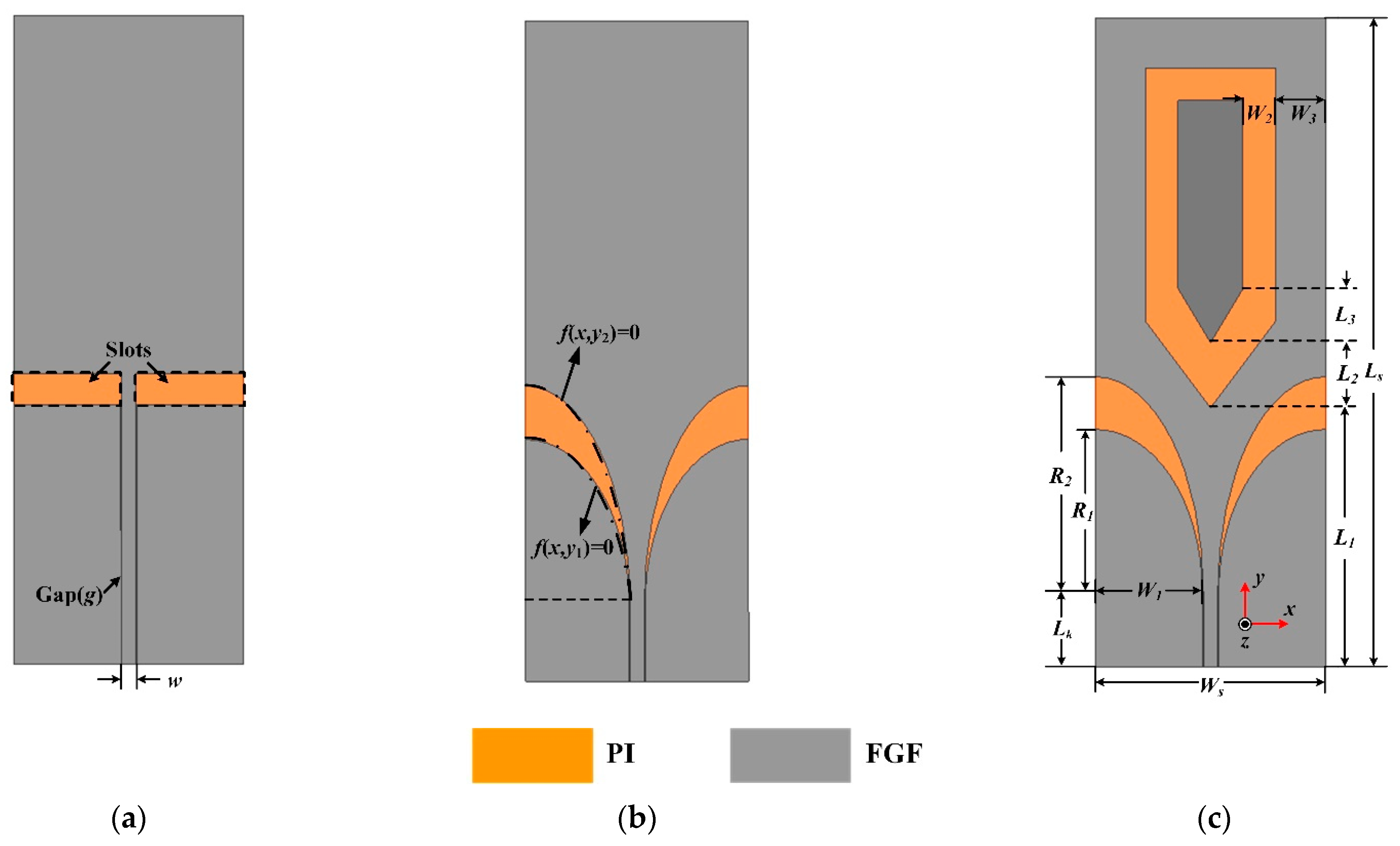
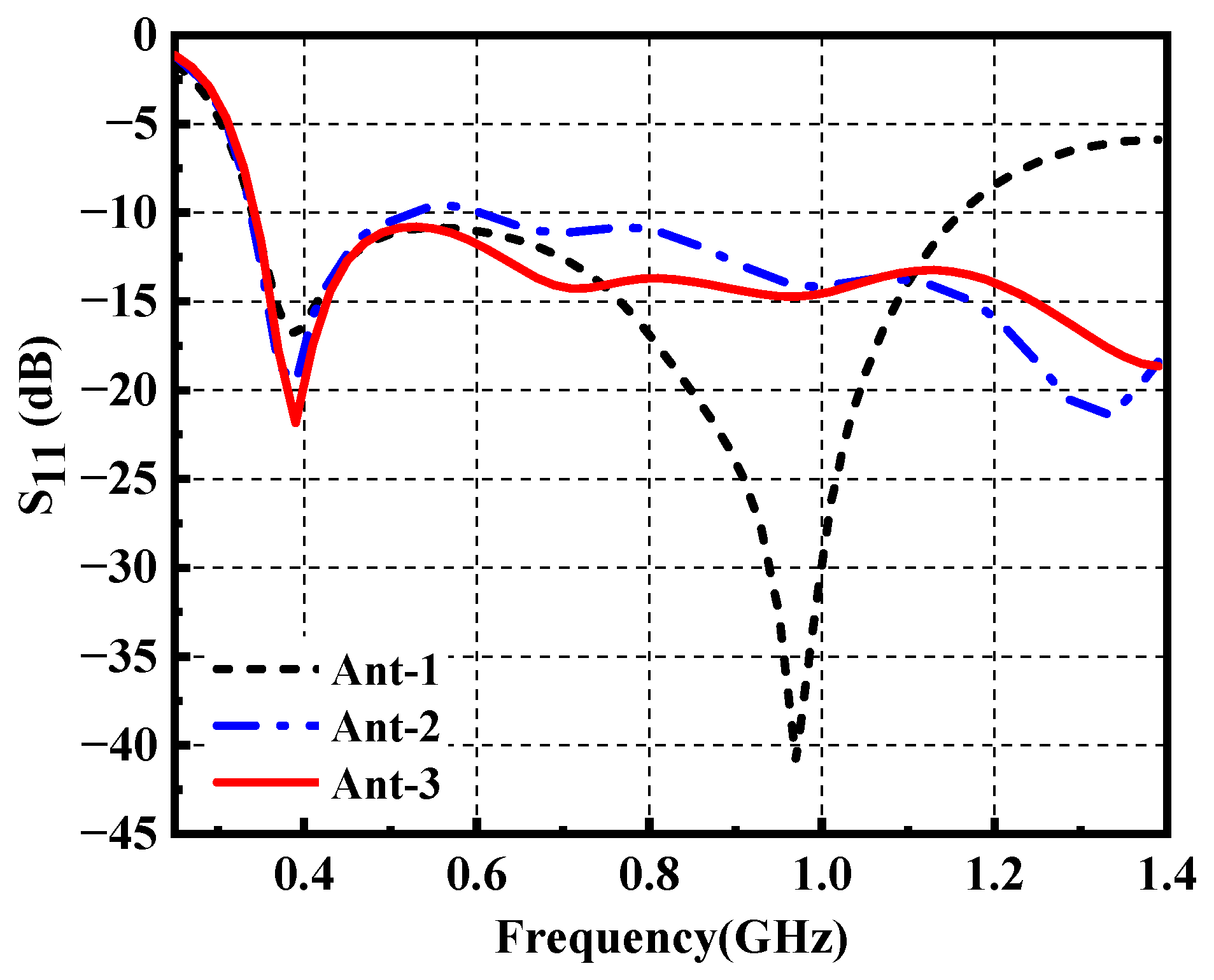
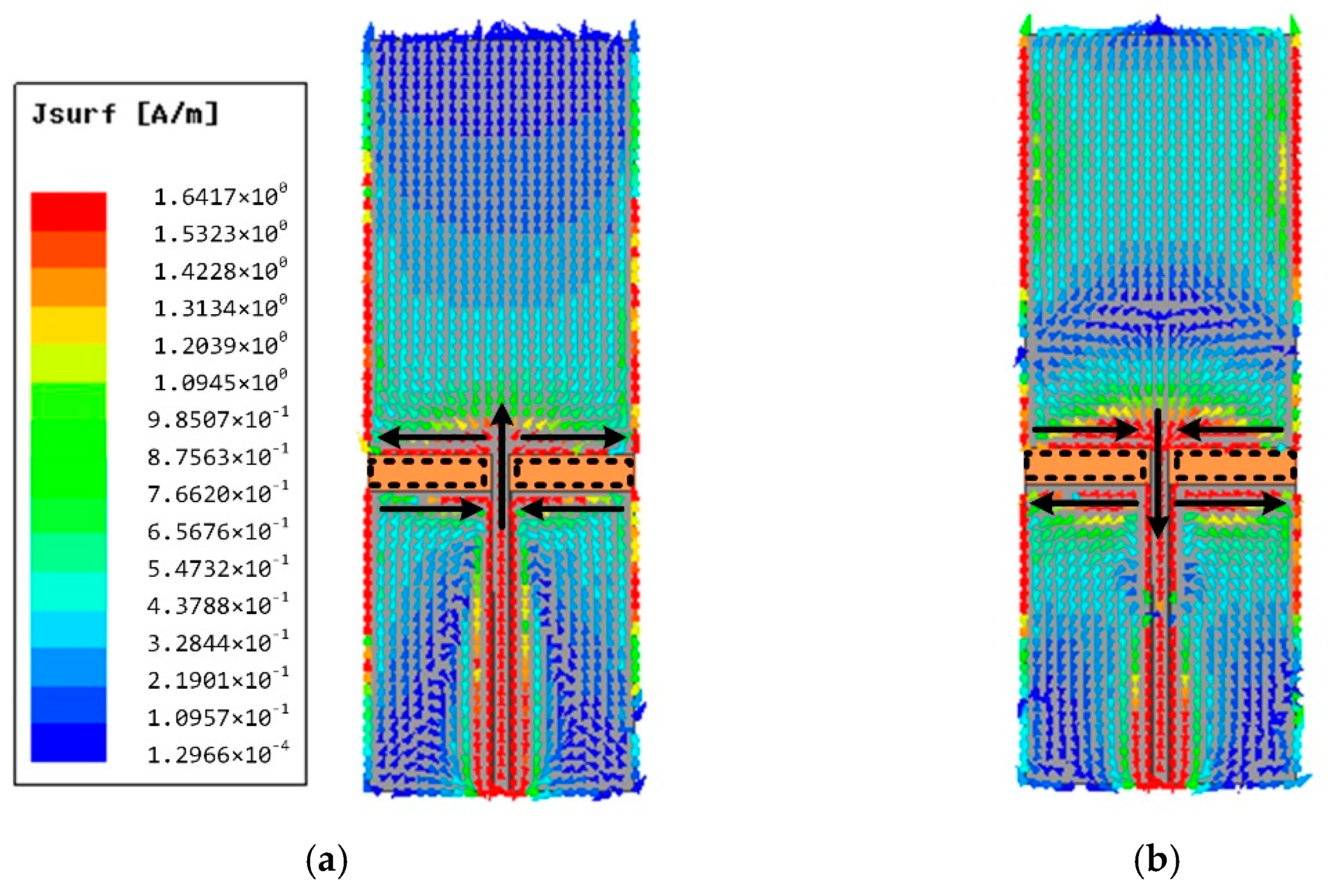
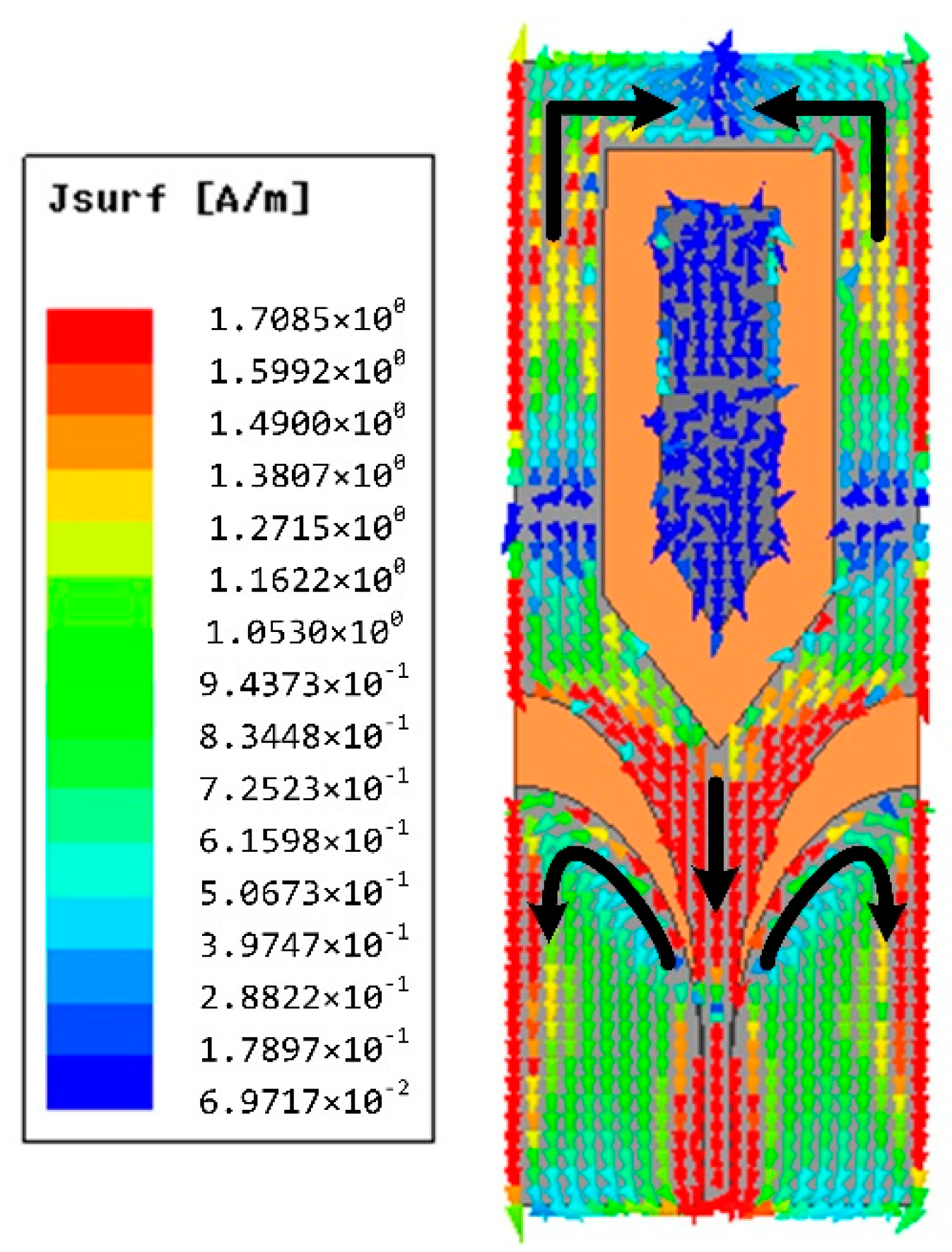
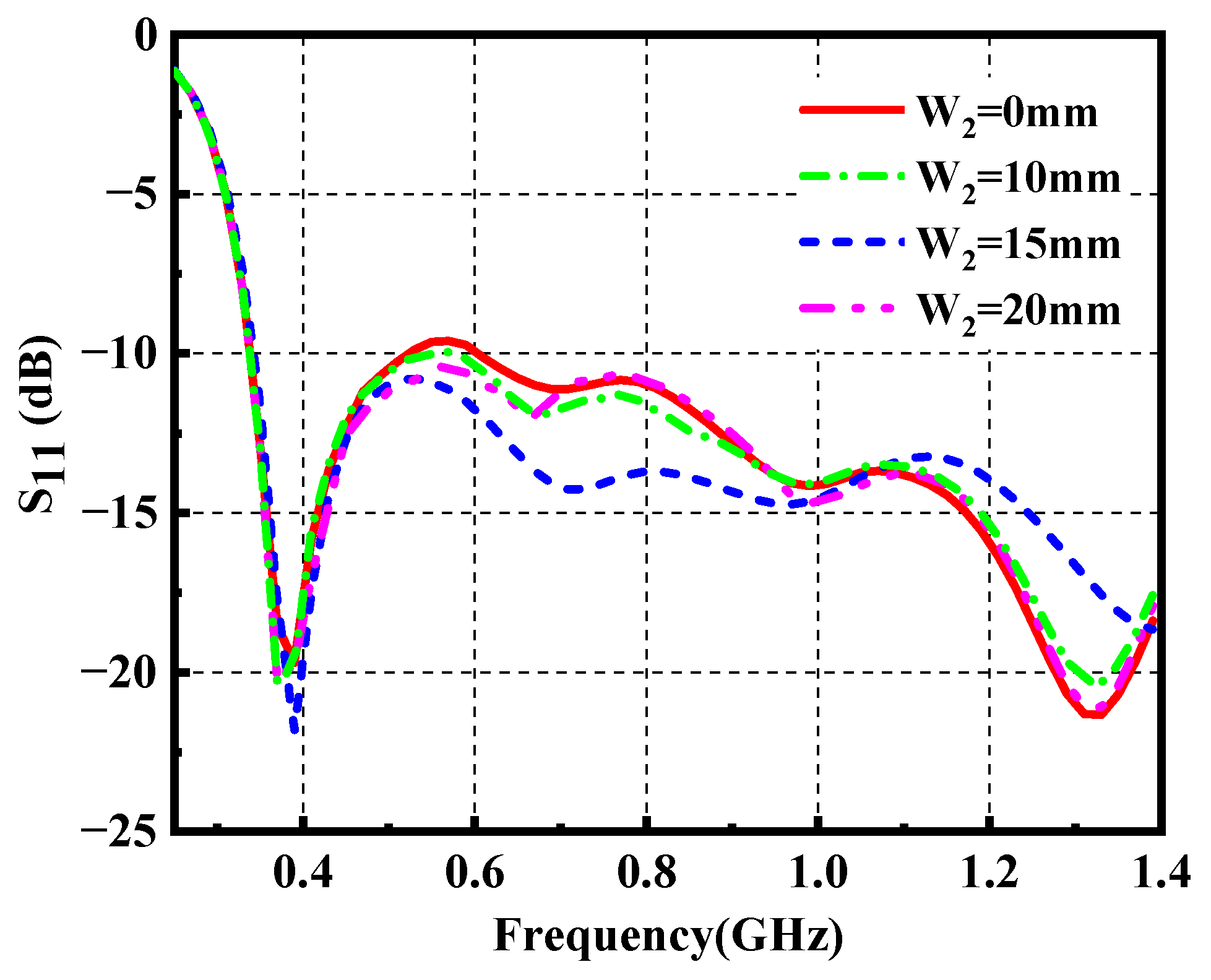

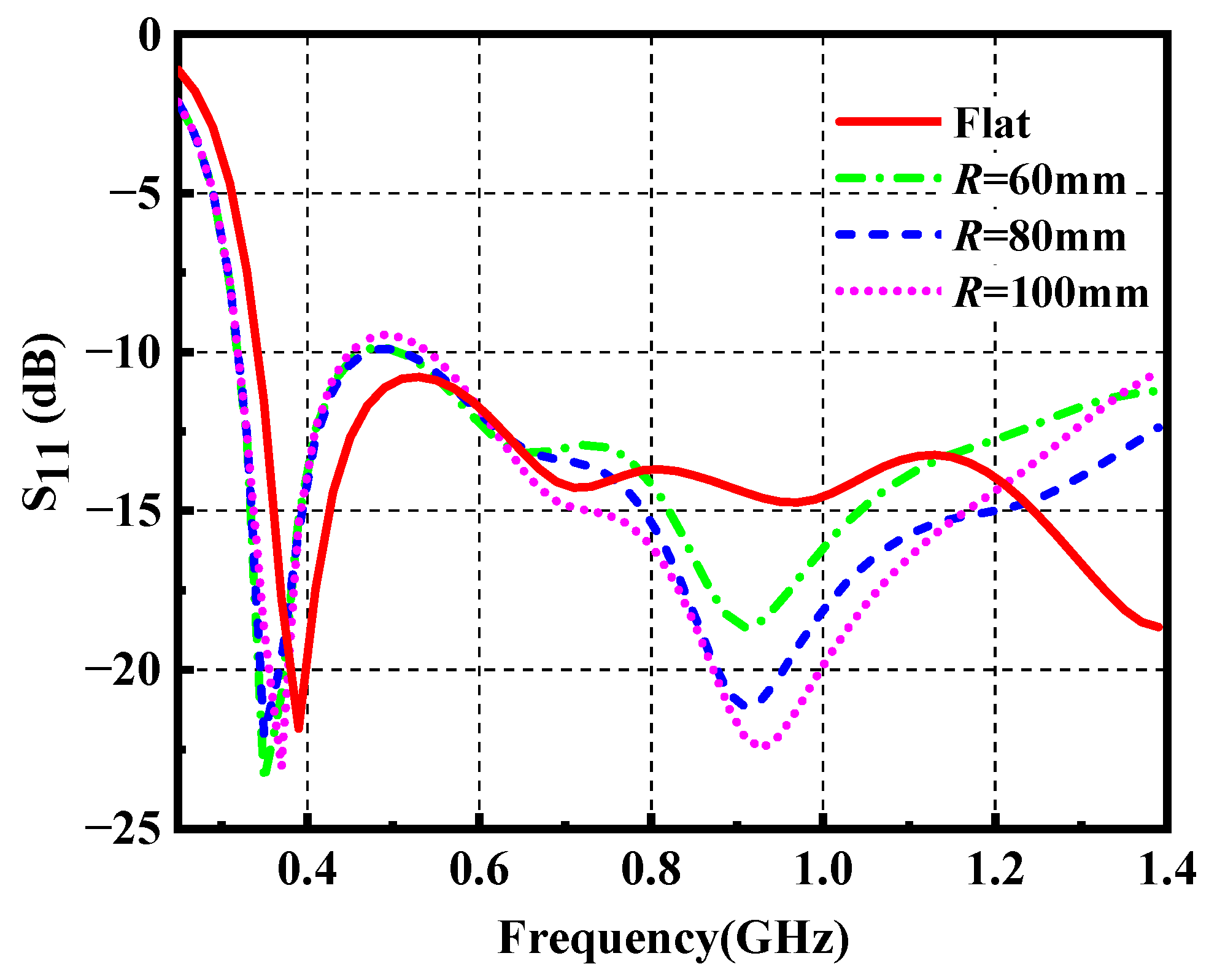

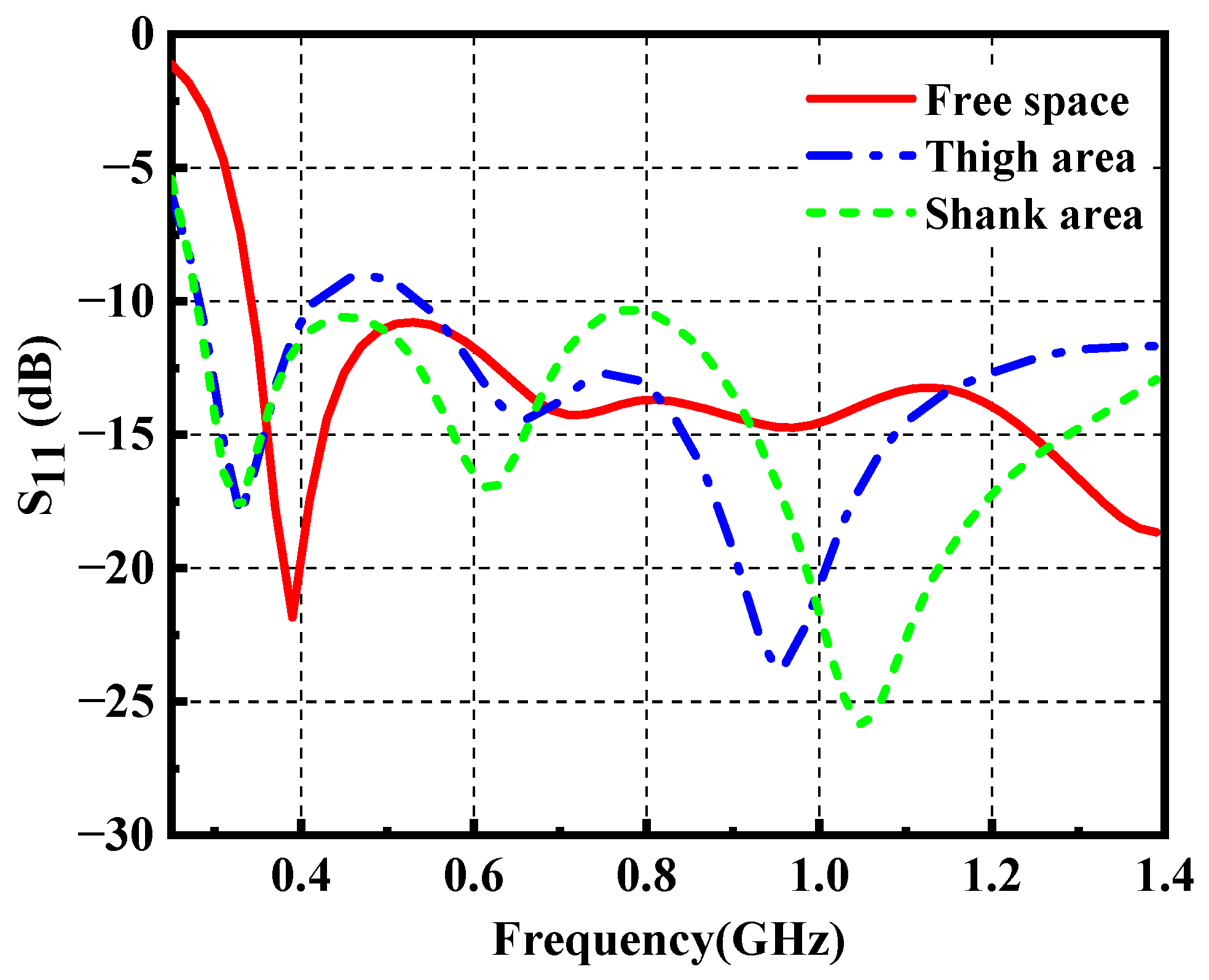

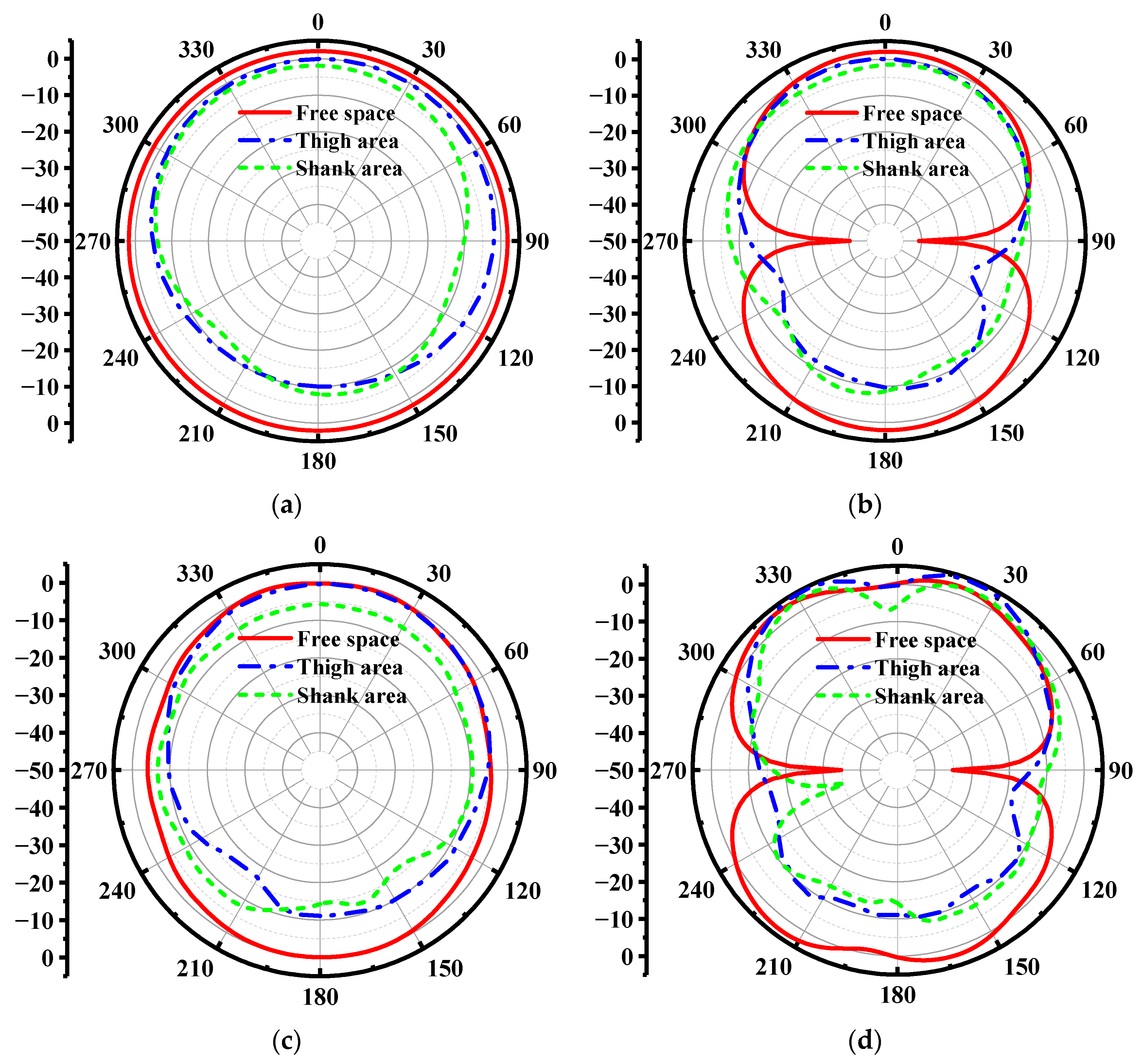
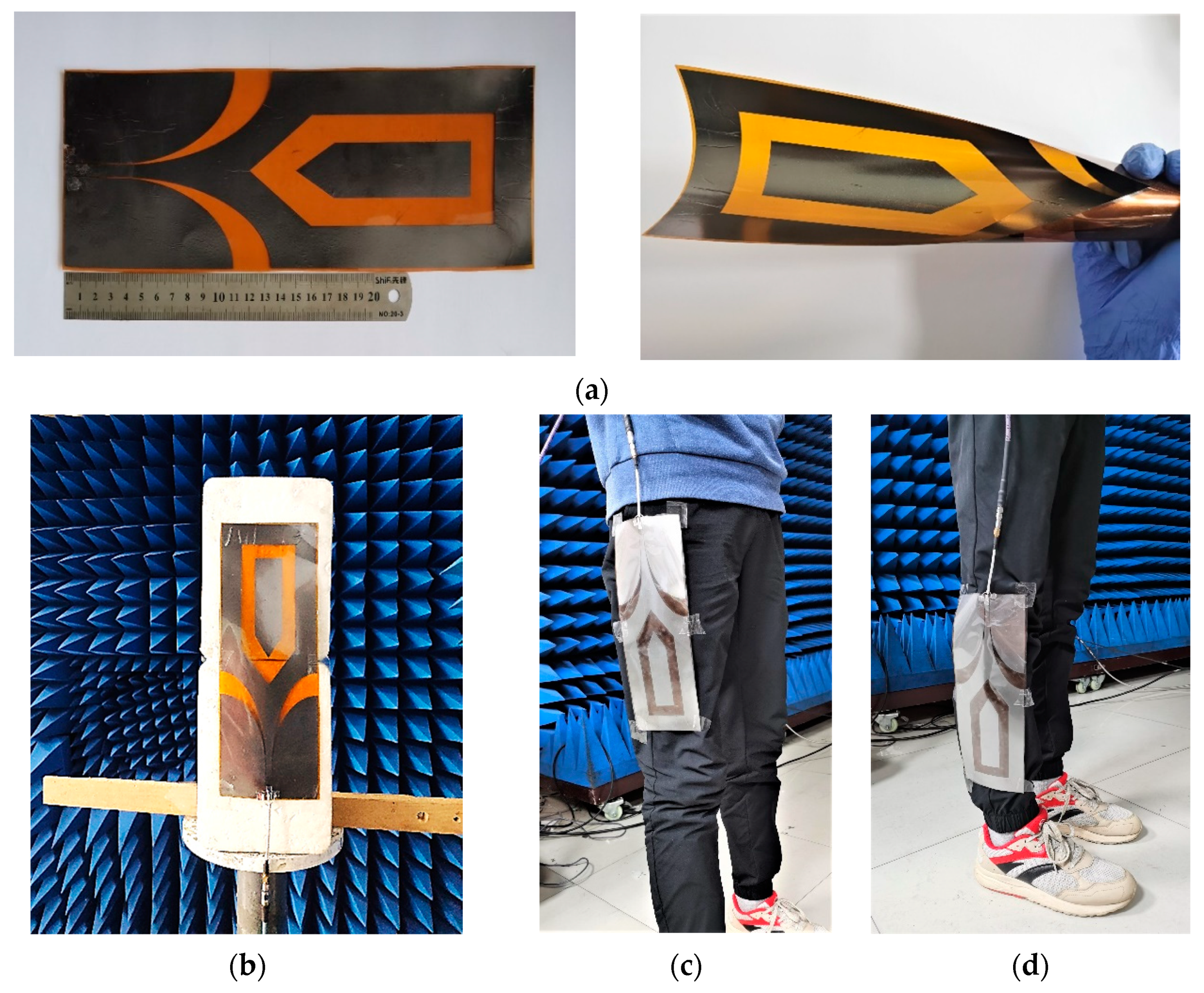
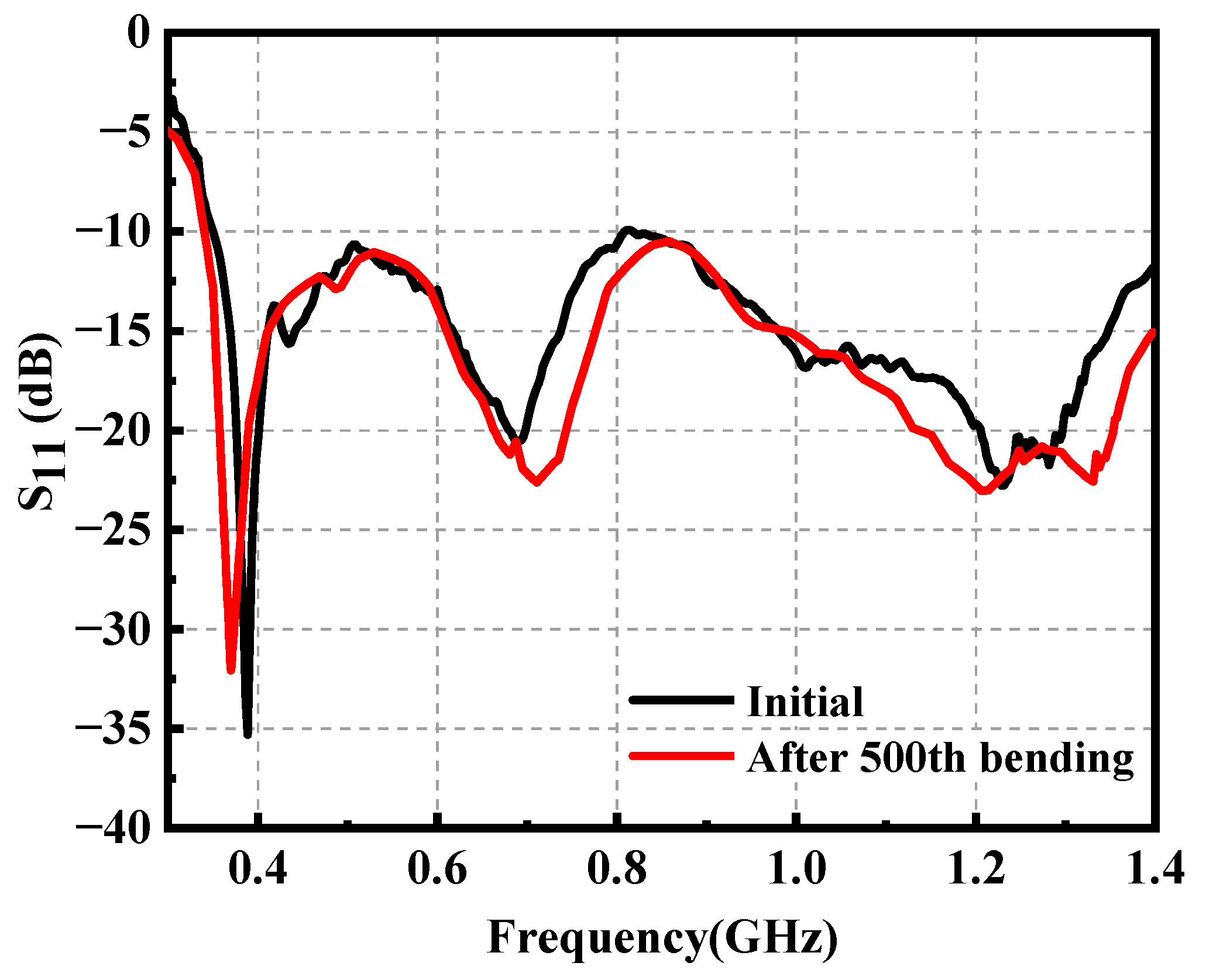
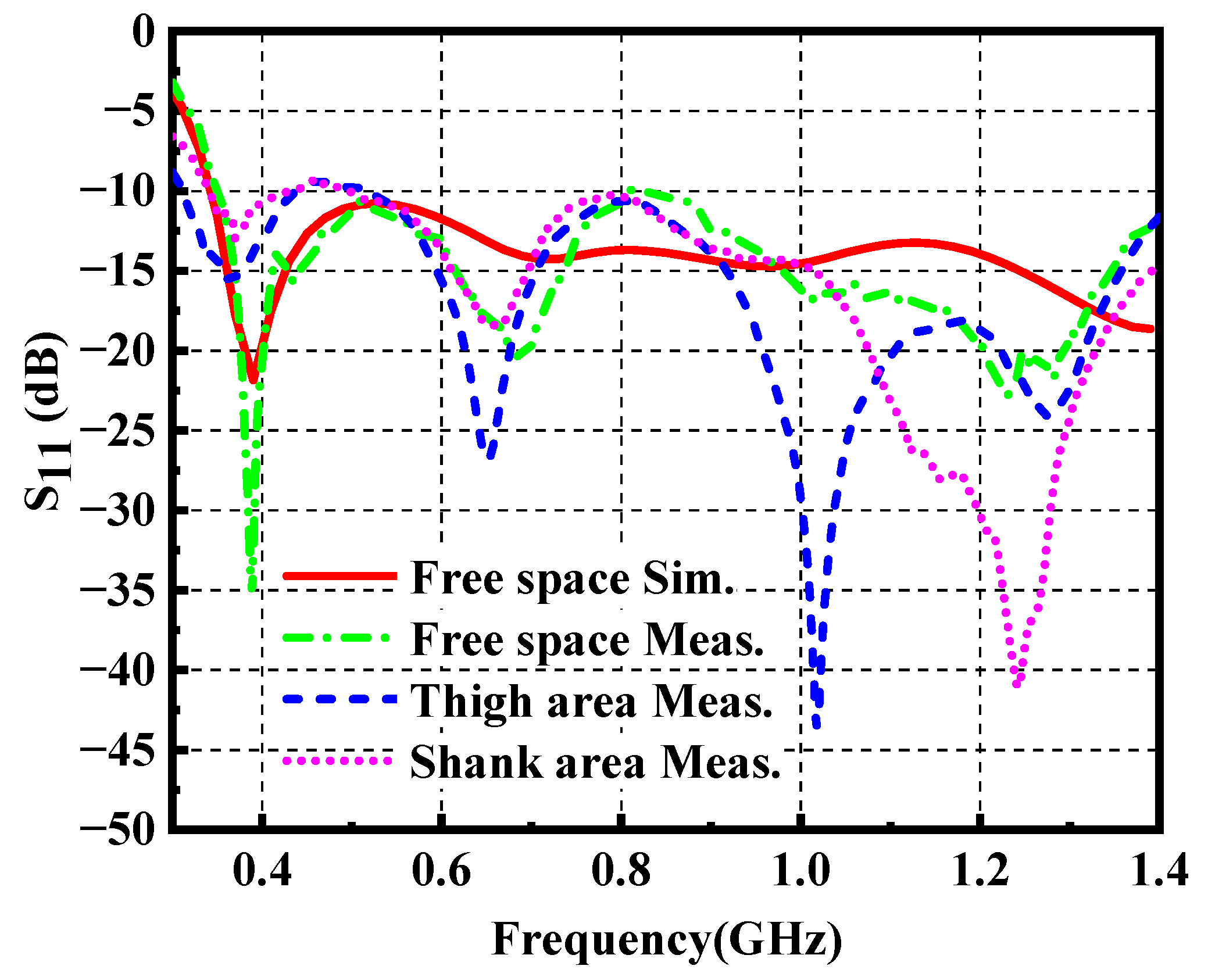
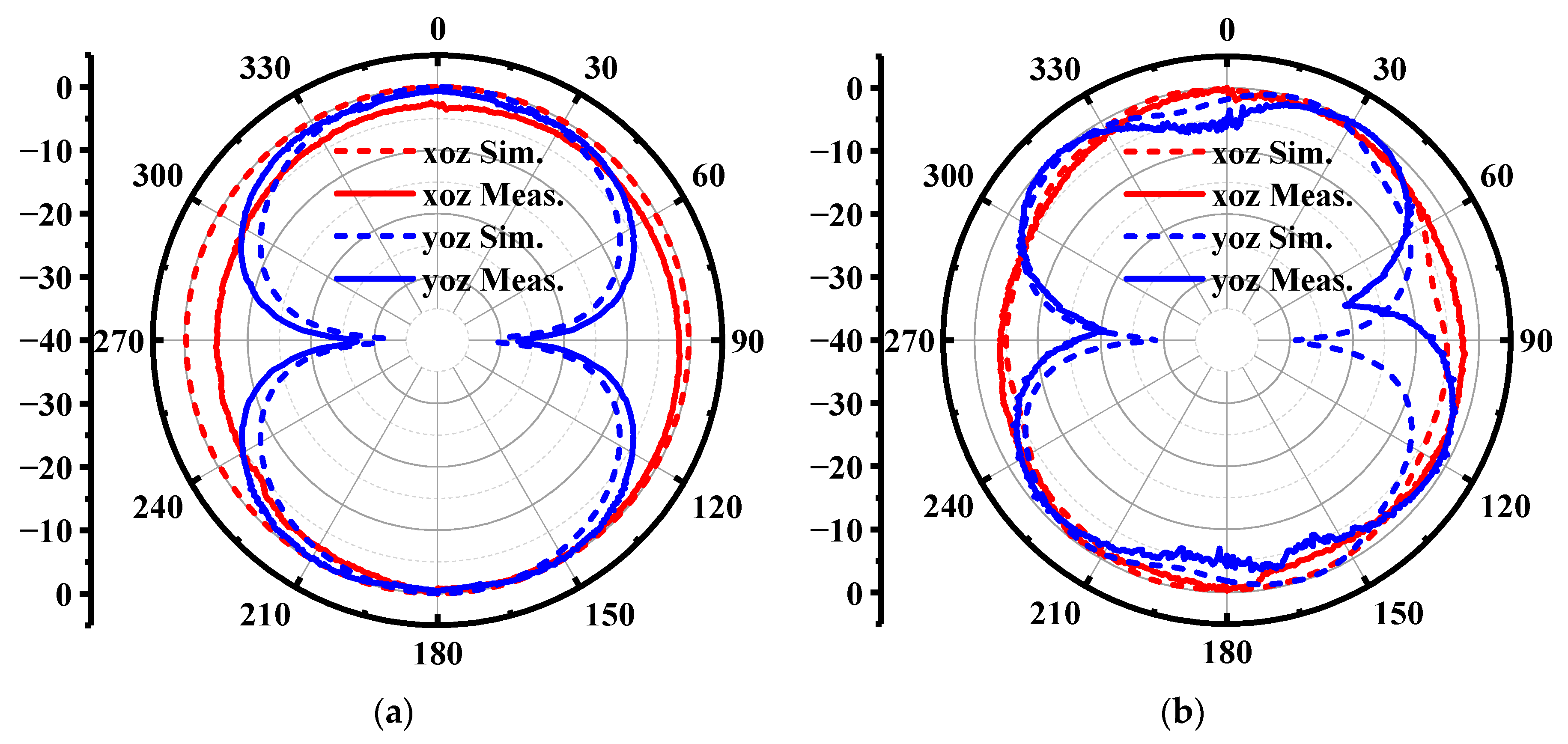
| Parameter | Value (mm) | Parameter | Value (mm) |
|---|---|---|---|
| Ws | 106 | L1 | 120 |
| W1 | 49.2 | L2 | 30 |
| W2 | 15 | L3 | 25 |
| W3 | 23 | Lk | 35 |
| R1 | 75 | Ls | 300 |
| R2 | 99.3 | h | 0.1 |
| w | 6.7 | g | 0.36 |
| Ref. | Structure | Size | Profile (mm) | Bandwidth (%) | Frequency Range (GHz) | Material (Conductive/Dielectric) |
|---|---|---|---|---|---|---|
| [9] | Microstrip | 1.86 × 1.56 (@6.9 GHz) | 3.4 | 93 | 3.68–10.1 | Conductive Fabrics/PDMS |
| [11] | Monopole | 0.47 × 0.33 (@2.0 GHz) | ~0.7 | 109 | 1.198–4.055 | Copper Taffeta/Polyester |
| [12] | Monopole and Loop | 0.29 × 0.20 (@4.0 GHz) | ~1.1 | 148 | 2.15–14.75 | NA./Rogers 6010 |
| [27] | Monopole Above AMC | 0.18 × 0.18 (@0.9 GHz) | ~4.3 | 37 | 0.75–1.1 | Conductive Nano-ink and Resin-coated Paper/Polycarbonate |
| [28] | Microstrip | 0.20 × 0.29 (@2.4 GHz) | ~0.8 | 59 | 1.62–3.0 | NA./RT/duroid 5880 |
| [29] | Monopole | 0.64 × 1.04 (@6.0 GHz) | ~0.3 | 67 | 4.0–8.0 | Graphene-assembled Film/Ceramic |
| Our work | Monopole | 0.87 × 0.30 (@0.87 GHz) | ~0.1 | 122 | 0.34–1.4 | FGF/PI |
Publisher’s Note: MDPI stays neutral with regard to jurisdictional claims in published maps and institutional affiliations. |
© 2021 by the authors. Licensee MDPI, Basel, Switzerland. This article is an open access article distributed under the terms and conditions of the Creative Commons Attribution (CC BY) license (https://creativecommons.org/licenses/by/4.0/).
Share and Cite
Li, W.; Zu, H.; Liu, J.; Wu, B. A Low-Profile Ultrawideband Antenna Based on Flexible Graphite Films for On-Body Wearable Applications. Materials 2021, 14, 4526. https://doi.org/10.3390/ma14164526
Li W, Zu H, Liu J, Wu B. A Low-Profile Ultrawideband Antenna Based on Flexible Graphite Films for On-Body Wearable Applications. Materials. 2021; 14(16):4526. https://doi.org/10.3390/ma14164526
Chicago/Turabian StyleLi, Wenhua, Haoran Zu, Jinjin Liu, and Bian Wu. 2021. "A Low-Profile Ultrawideband Antenna Based on Flexible Graphite Films for On-Body Wearable Applications" Materials 14, no. 16: 4526. https://doi.org/10.3390/ma14164526
APA StyleLi, W., Zu, H., Liu, J., & Wu, B. (2021). A Low-Profile Ultrawideband Antenna Based on Flexible Graphite Films for On-Body Wearable Applications. Materials, 14(16), 4526. https://doi.org/10.3390/ma14164526







